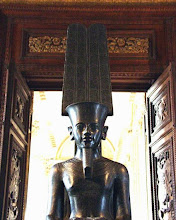Longevity record for exploding star
Guinness Book of Records then? I doubt they know what that is in the neighborhood of that exploding star. And if they would there is no one to tell about it after such a massive blast. "The explosive death of a massive star has broken the record for longest-lived light show. Observations from NASA’s Swift satellite have revealed a so-called gamma-ray burst for which the afterglow remained visible for more than 125 days. When a star that’s 10 to 25 times as massive as the Sun checks out, it can release in a matter of seconds the same amount of energy that the sun will radiate over its 10-billion-year lifetime. Once ejected, these GRB jets slam into nearby interstellar gas, and the resulting collision generates an intense afterglow that can radiate brightly in X-rays and other wavelengths. Dubbed GRB 060729 for the date of its discovery, the long-lived gamma-ray burst resides in the constellation Pictor. Swift’s X-ray telescope monitored the afterglow until it faded out, a phenomenon that typically lasts for a week or two. But the afterglow from this burst started off so bright and faded so slowly that the telescope monitored it for months, into late November 2006. In addition to its unprecedented brightness, the long-lived GRB is much closer to Earth than many bursts, which allowed the telescope to pick up the glow for an extended period. Unlike other afterglows, the long-lived one showed little drop in brightness over the 125 days of observation. The prolonged light output suggests an underlying engine that pumped energy continuously to the burst. “It requires a larger energy injection than what we normally see in bursts and may require continuous energy input from the central engine,” said study team leader Dirk Grupe, an astronomer of Penn State University. The central engine could be a magnetar, a neutron star with a mega magnetic field, the scientists suggest. The magnetic field puts the brakes on the magnetar’s rotation. The energy from this spin-down could get converted into magnetic energy that flows into the initial blast wave that triggered the GRB in the first place. Grupe’s colleague Xiang-Yu Wang, also of Penn State, calculated that this magnetic energy could power an observed afterglow for months. The research will be published in an upcoming issue of The Astrophysical Journal." Visit the site for images of the workings of such a stellar explosion.
Article from Space.com:






